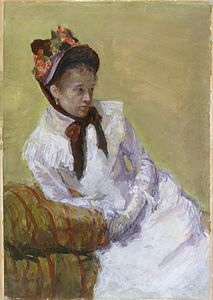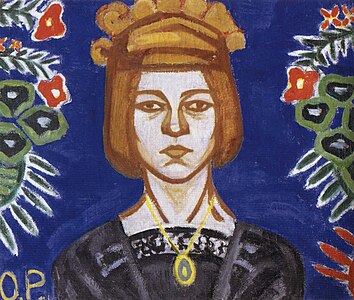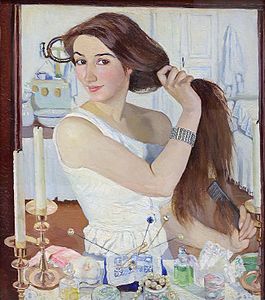Wikipedia:Wikipedia Signpost/2015-08-05/Editorial
Wikipedia better equipped to deal with systemic bias than traditional publishers
The German publisher Taschen is one of the world's leading producers of art books. Among their most popular books are the Taschen Basic Art series, small (about 10 in. × 12 in.) affordable ($10 US) volumes, invaluable introductory volumes which are ubiquitous in libraries, museums, and bookstores.
In 2010, the artists Ditte Ejlerskov and EvaMarie Lindahl contacted Taschen to point out that out of 97 volumes published in the Basic Art series, only five included women: Tamara de Lempicka, Maria Helena Vieira da Silva, Frida Kahlo, Georgia O'Keeffe, and Jeanne-Claude (who shares a volume and a Wikipedia article with her collaborator and husband Christo). Taschen asked the pair about which artists they had omitted and should include in the series. That particular artists would be omitted through oversight or happenstance is reasonable, but that one of the world's leading publishers of art books is completely unaware of their major omissions is startling, as any art aficionado could easily produce a list of a half-dozen omissions instantly.
Ejlerskov and Lindahl produced a list of 100. This list was the basis for their exhibition last year at the Malmö Konsthall in Sweden called About: The Blank Pages. They assembled the 97 Basic Art books on two bookshelves, accompanied by covers they had created for each of the women on their list, covering books of blank pages.
The Basic Art series is not the canon. Canonicity or artistic excellence is certainly one criterion for inclusion, but artists are also clearly included on the basis of popularity, artistic influence, or representation of a particular historical moment, so one cannot argue that particular women were excluded from the list because their work is not as good as male artists included in the series. Even the most fervent adherents of Basic Art subjects Norman Rockwell or Keith Haring won't attempt to claim that they belong in the same rank as Michelangelo. One can quibble about many of the names on Ejlerskov and Lindahl's list (or ones omitted from the list, such as Remedios Varo, Tracey Emin, Kara Walker, or Sarah Goodridge), but one cannot seriously argue that artists like Mary Cassatt, Artemisia Gentileschi, Judy Chicago, and Cindy Sherman do not far outstrip some in the Basic Art series like Friedensreich Hundertwasser or Franz Stuck or the preposterous Fernando Botero in terms of artistic merit, influence, historical importance, and popularity.
Like the Basic Art series, Wikipedia serves an introductory audience, and in this particular area, Wikipedia succeeds where Taschen has failed. Of the 100 names on the list, which I've linked in my userspace, only two artists were omitted from the English Wikipedia when I wrote this editorial: The Canadian artist Helen Frances Gregor appears to be absent from Wikipedia entirely, and Russian painter Nadia Khodasevich Leger is mentioned a few times in passing as the wife of Fernand Léger, but not as an artist in her own right. We have many issues with systemic and gender bias on Wikipedia, but we also have the ability to address those biases in a way that a traditional publisher like Taschen cannot. We can question and argue about those omissions while Taschen cannot even recognize its own errors. We can form projects like Art + Feminism and WikiProject Women artists to systematically address these issues and improve our own coverage, while Taschen requires a public shaming before it can even begin to do so. It is another testament to the ability of Wikipedia to respond to omissions like these that even before this editorial was published, an enterprising editor created articles on the missing artists, articles I expect will be featured on Did You Know within a week.
Below is a gallery of self-portraits by twelve of the artists on Ejlerskov and Lindahl's list who are included in the English Wikipedia:
-
Sofonisba Anguissola (1556)
-
Mary Cassatt (1878)
-
Élisabeth Sophie Chéron (1672)
-
Lavinia Fontana (1577)
-
Artemisia Gentileschi (1638)
-
Angelica Kauffmann (1770)
-
Judith Leyster (1630)
-
Paula Modersohn-Becker (1906)
-
Olga Rozanova (1911)
-
Zinaida Serebriakova (1909)
-
Suzanne Valadon (1883)
- Gamaliel has been an administrator on the English Wikipedia since 2004 and is currently an editor-in-chief of the Signpost. The views expressed in this editorial are his alone and do not reflect any official opinions of this publication. Responses and critical commentary are invited in the comments section.

















Discuss this story
Sorry to steal your thunder, but I've created pages on EvaMarie Lindahl, Helen Frances Gregor and Nadia Khodasevich Léger.
Other well-known and incontrovertibly important but missing female artists are Louise Bourgeois, Sonia Delaunay, Eva Gonzalès, Barbara Hepworth, Berthe Morisot and Bridget Riley. Not included in the list of 100 are the likes of Rachel Whiteread and Elizabeth Thompson (aka Lady Butler).
Some other relevant (if slightly older) links on the lack of recognition for female artists, in terms of reputation, accessions to public collections, and auction prices: [1] [2] [3] Good luck with your editorial. -- Theramin (talk) 00:41, 5 August 2015 (UTC)[reply]
Perhaps better equipped, but when it comes to fighting SPAM Wikipedia fails hopelessly. Lip-service, no action. The Banner talk 06:33, 6 August 2015 (UTC)[reply]
Last summer we had a WIKI-KIK (Edit-a-thon) around this project in Sweden. EvaMarie and Linda Fagerström hosted the event at Malmö konsthall, and Ditte was one of the participants. /Axel Pettersson (WMSE) (talk) 12:37, 6 August 2015 (UTC)[reply]